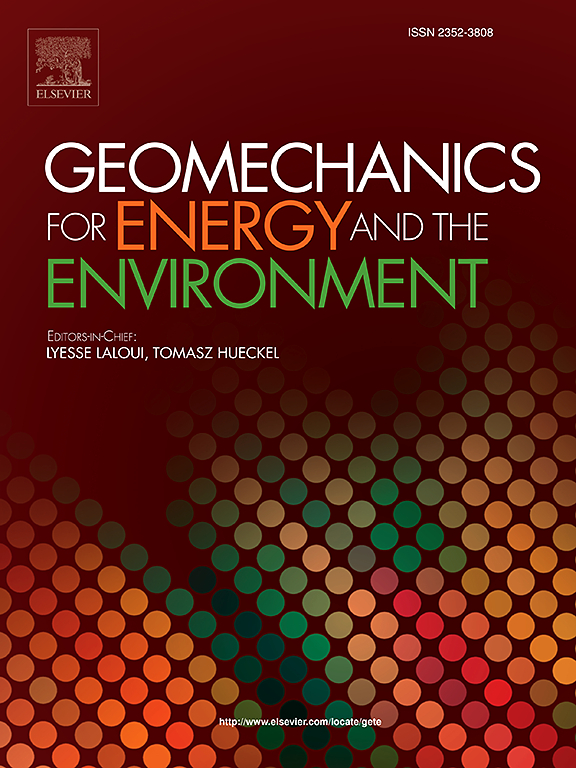Numerical investigation of the gas-induced fracturing behavior of the Callovo-Oxfordian claystone
IF 3.3
2区 工程技术
Q3 ENERGY & FUELS
引用次数: 0
Abstract
This paper presents a synthesis of the numerical approaches adopted by three research teams to reproduce gas fracturing initiation in the Callovo-Oxfordian claystone. This collaborative work has been carried out within the framework of the DECOVALEX-2023 project. First, the research teams investigated the impact of gas migration and fluid pressurization within the Callovo-Oxfordian claystone and the fracturing threshold pressure through a series of benchmark exercises under plane strain conditions with increasing complexity. The three numerical approaches accounted for couplings between the mechanical part and hydraulic parameters, such as permeability, through different variables such as damage, fracture aperture, or equivalent plastic strain. Then, the research teams utilized their models to reproduce two injection tests at the field-scale. A challenge faced by the research teams was dealing with a single study point per injection test, complicating the study of responses near the injection interval. This part included interpretative analyses with simplified approaches for a better understanding of gas pressure build-up. Overall, the numerical simulations yielded acceptable results in reproducing the in-tests after a calibration process and provided insights into the hydromechanical response of the Callovo-Oxfordian claystone under two-phase flow conditions. Nonetheless, the benchmark exercises showed that the numerical results using different mechanical constitutive models yielded different outcomes when reaching critical values leading to fracturing, which strongly depend on how the mechanical part influences the hydraulic response through the changes in hydraulic properties.
求助全文
约1分钟内获得全文
求助全文
来源期刊

Geomechanics for Energy and the Environment
Earth and Planetary Sciences-Geotechnical Engineering and Engineering Geology
CiteScore
5.90
自引率
11.80%
发文量
87
期刊介绍:
The aim of the Journal is to publish research results of the highest quality and of lasting importance on the subject of geomechanics, with the focus on applications to geological energy production and storage, and the interaction of soils and rocks with the natural and engineered environment. Special attention is given to concepts and developments of new energy geotechnologies that comprise intrinsic mechanisms protecting the environment against a potential engineering induced damage, hence warranting sustainable usage of energy resources.
The scope of the journal is broad, including fundamental concepts in geomechanics and mechanics of porous media, the experiments and analysis of novel phenomena and applications. Of special interest are issues resulting from coupling of particular physics, chemistry and biology of external forcings, as well as of pore fluid/gas and minerals to the solid mechanics of the medium skeleton and pore fluid mechanics. The multi-scale and inter-scale interactions between the phenomena and the behavior representations are also of particular interest. Contributions to general theoretical approach to these issues, but of potential reference to geomechanics in its context of energy and the environment are also most welcome.
 求助内容:
求助内容: 应助结果提醒方式:
应助结果提醒方式:


